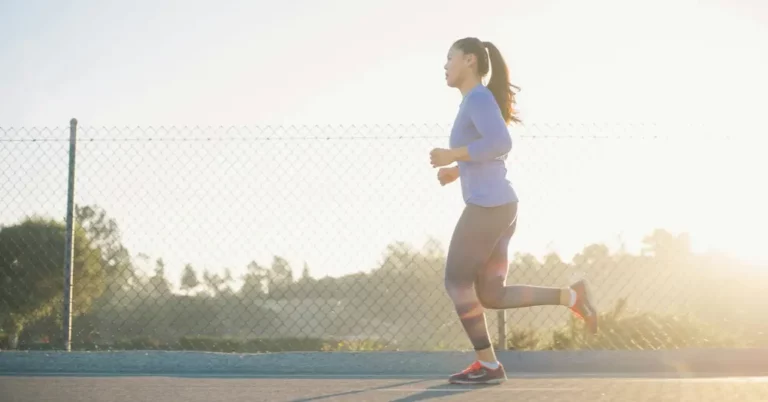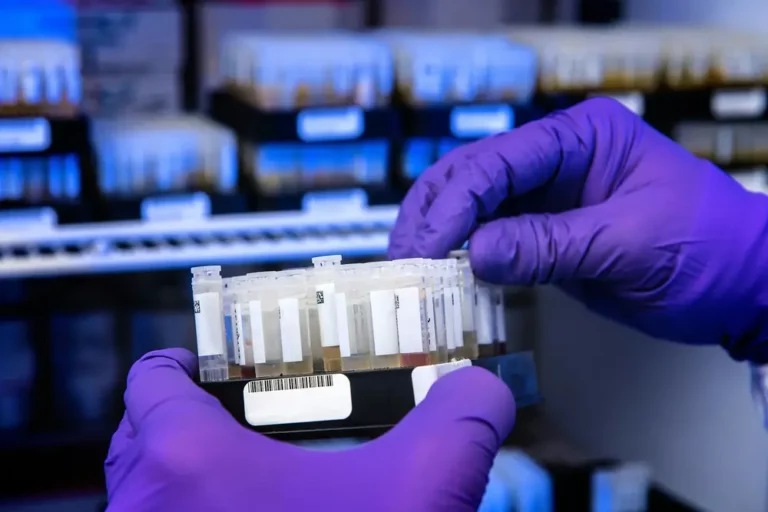Why Your Right Calf Is Bigger than Your Left & How to Fix It
Have you ever noticed one of your calves is bigger than the other and wondered why? I sure have. It’s a bit of a puzzle, especially when you realize it’s not just a temporary change. My right calf has always been noticeably larger than my left, and it’s not just about muscle.
This difference has sparked my curiosity, leading me to dive into why our bodies might develop this way. Is it because I use one leg more than the other, or could it be something else? Turns out, I’m not alone in this. Many people experience the same thing, and the reasons behind it are as fascinating as they are varied.
Calf Muscle Discrepancy
When I first noticed my right calf was noticeably larger than my left, I found myself spiraling down a rabbit hole of questions and concerns. What causes this discrepancy? Is it normal, or should I be worried? To understand this phenomenon better, let’s delve into the anatomy of the calf muscles and explore how common uneven calf muscles really are.
Overview of Calf Muscle Anatomy
The calf is composed of two major muscles: the gastrocnemius and the soleus. The gastrocnemius is the larger, more visible muscle that forms the bulge beneath the skin. It’s what people generally refer to when they talk about calf muscle size. The soleus, on the other hand, lies beneath the gastrocnemius and plays a vital role in standing and walking. These muscles are crucial for movement, helping to propel the body forward and maintain posture.
In my quest to understand my own muscle imbalance, I learned that these muscles could differ in size for a variety of reasons, ranging from natural anatomical variance to the effects of daily activities or even more specific conditions like Popliteal Artery Entrapment Syndrome (PAES).
Prevalence and Perception of Uneven Calf Muscles
Discovering my uneven calves initially made me feel self-conscious. However, I quickly found out that I’m far from alone in this. Muscle asymmetry is surprisingly common, and in most cases, it’s perfectly normal. The discrepancy often arises from dominant side overuse. Since I’m right-handed, my right side is dominant, which could explain why my right calf is bigger.
In fact, a slight difference in muscle size is expected, especially among individuals who engage in activities that favor one leg over the other, like running or bicycling. These actions put more strain on one leg, leading to more pronounced muscle development on that side.
While the perception of this imbalance can be a source of insecurity for some, it’s important to remember that our bodies are naturally asymmetrical to some degree. What’s essential is to pay attention to any sudden changes or discomfort that might indicate an underlying condition.
Common Causes of Uneven Calf Size
Overuse and Dominant Leg Theory
I’ve found that one interesting aspect of having one calf bigger than the other often comes down to the concept of overuse and dominance. Essentially, most of us have a dominant side that we rely on more for stability and strength, especially during physical activities. For instance, I’m right-handed, and naturally, I’ve noticed that my right calf is slightly bigger than my left. This isn’t uncommon, as the dominant leg usually gets more of a workout during day-to-day tasks like walking, climbing stairs, or even driving.
Skeletal and Muscular Differences
Delving deeper, I discovered skeletal and muscular differences can also play a crucial role in calf size disparity. Our bodies aren’t perfectly symmetrical, and slight variations in bone structure or muscle attachment points can influence muscle development. For example, if one leg is slightly longer than the other, it could lead to more muscle development in the calf of the longer leg due to constant compensation for balance and motion. It’s fascinating how our bodies adapt and develop based on our unique anatomical blueprints.
Impact of Exercise and Training Habits
Lastly, our exercise routines and training habits significantly impact muscle development, including our calves. I realized that certain activities and sports that favor one side can lead to uneven muscle growth. Runners and cyclists might notice more pronounced differences based on their dominant leg and how they push off or pedal. Moreover, if your workout routine isn’t balanced or you favor exercises that isolate one leg over the other, this can contribute to one calf becoming larger. Ensuring a balanced training regimen that targets both legs equally is crucial for symmetrical muscle development.
Medical Conditions Contributing to Calf Size Difference
In my journey to understand why my right calf might be bigger than my left, I’ve stumbled upon some medical conditions that can contribute to variations in calf size. Let’s delve into a few specific conditions and how they might play a role.
Deep Vein Thrombosis and Circulatory Issues
I learned that Deep Vein Thrombosis (DVT) is a condition where a blood clot forms in a deep vein, usually in the legs. This can cause one calf to appear larger than the other due to swelling and inflammation. It’s a serious condition since the clot can break loose and travel to the lungs, causing a pulmonary embolism. Beyond DVT, other circulatory issues like poor blood flow can also lead to differences in calf size due to inadequate nutrition and oxygen supply to the tissues.
Varicose Veins and Their Effects
Varicose veins are another potential culprit. They occur when veins become enlarged, dilated, and overfilled with blood, leading to swelling. My research showed that this condition is more than just a cosmetic issue; it can cause pain and discomfort and contribute to the swelling of one calf over the other. The added pressure and swelling can certainly explain a visible difference in calf size.
Lymphedema and Related Swelling
Lymphedema, characterized by swelling due to a blockage in the lymphatic system, can also result in one calf being larger. This condition prevents lymph fluid from draining well, and the fluid buildup leads to swelling. I found it fascinating that something as intricate as the lymphatic system could have such a visible impact on our bodies.
Skin Infections Like Cellulitis
Skin infections, including cellulitis, can cause significant swelling and redness in affected areas. This bacterial infection affects the skin and the tissue beneath, causing the area to expand and potentially make one calf appear larger than the other. It’s crucial to treat these infections promptly to prevent them from worsening.
Tumors and Unilateral Swellings
Lastly, tumors, both benign and malignant, can lead to differences in calf size. These growths can cause unilateral swelling, meaning they affect only one part of the body, hence potentially creating a size disparity between the calves. While the thought of tumors is unsettling, it’s a reminder of the importance of paying attention to any unusual changes in our bodies.
In exploring these medical conditions, it’s clear that our bodies are complex systems where many things can influence something as seemingly straightforward as calf size.
Natural Asymmetry and Genetic Factors
When I started researching why my right calf might be larger than my left, I stumbled upon some interesting truths about how our bodies are built. It turns out there’s a lot more going on beneath the surface than I initially thought.
Role of Genetics in Muscle Development
I’ve always been fascinated by how our genes play a significant role in determining our physical characteristics, and muscle development is no exception. It’s fascinating to learn that our genetic makeup can influence not only the size and strength of our muscles but also their potential for growth. This means that if my family has a history of having more muscular builds, it could explain why there’s a noticeable difference in the size of my calves. Genetic predisposition can determine how muscles respond to physical activity, and in some cases, it might lead to one calf becoming more developed than the other, especially if my activities or exercises exert more pressure on one leg.
Natural Body Asymmetry
Moving on, the concept of natural body asymmetry was a real eye-opener for me. I had always assumed that our bodies were supposed to be perfectly symmetrical, but it turns out that’s not the case. Natural asymmetry refers to the slight discrepancies in size and shape that occur naturally between the two sides of our body. This can affect not just the calves but any body part. For instance, it’s common for one foot to be slightly larger than the other or for one eye to be a different size or shape. These variances are entirely normal and usually not cause for concern. I realized that the slight difference in my calf sizes might just be a part of my body’s unique structure. It’s comforting to know that these minor asymmetries are a normal part of being human and don’t necessarily indicate any underlying health issues.
Conclusion
I’ve always believed that understanding our bodies is the first step to improving our health and fitness. That’s why I dove into the reasons behind uneven calf sizes and how we can address them. Remember, it’s not just about aesthetics; it’s about our overall well-being. Regular balanced workouts and being mindful of our body’s signals are key. If you ever notice anything unusual, like persistent pain or numbness, don’t hesitate to seek medical advice. Let’s keep striving for balance, not just in our calves but in every aspect of our lives. Here’s to stronger, healthier legs that carry us through all our adventures!
FAQ – Frequently Asked Questions
How can I balance my calf muscles through exercises?
To balance your calf muscles, engage in exercises like squats, lunges, and single-leg calf raises that target both legs equally. Incorporating activities such as yoga and Pilates can also help improve your balance and coordination.
What lifestyle changes can help with calf muscle imbalances?
Adopting a lifestyle that includes regular physical activity targeting both legs, practicing balance-focused exercises like yoga and Pilates, and being vigilant about potential medical concerns can help address calf muscle imbalances effectively.
What signs indicate I should seek medical advice for calf muscle issues?
Signs to watch for include persistent pain, cramping, numbness, or tingling in your calf muscles, as these could be indications of medical conditions such as Popliteal Artery Entrapment Syndrome. Seeking timely medical advice is essential if you experience any of these symptoms.







